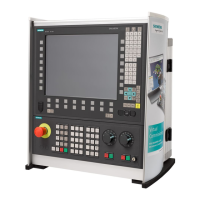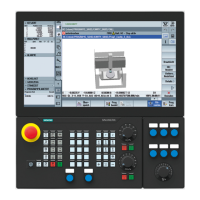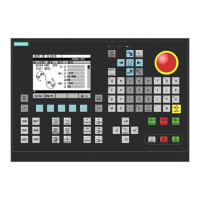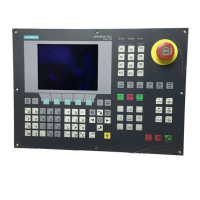Detailed Description
2.11 Subroutine call with M, T, and D functions
Mode Group, Channel, Program Operation, Reset Response (K1)
2-146 Function Manual, 08/2005 Edition, 6FC5397-0BP10-0BA0
Machine data Specific tasks
MD22254 $MC_AUXFU_ASSOC_M0_VALUE Additional M function for program stop
MD22256 $MC_AUXFU_ASSOC_M1_VALUE Additional M function for conditional stop
MD26008 $MC_NIBBLE_PUNCH_CODE Definition of M functions (for nibble-specific)
MD26012 $MC_PUNCHNIB_ACTIVATION Activation of punching and nibbling functions
Note
Exceptions
The configured M function for tool change:
MD22560 $MC_TOOL_CHANGE_M_CODE (M function for tool change)
Boundaries for macro function
Macros are used to define a character string replacement consisting of text only. This
replacement is made prior to execution of the replacement mechanism described here.
Boundary conditions
For subroutine calls with M, T, and D functions, the following supplementary conditions
apply:
• Only one function may be replaced for each part program line.
• A subroutine call must not be superimposed on M functions with predetermined meaning.
• In a part program block with an M, T or D function to be replaced, the following applies:
- No modal subprogram call can be active
- No subroutine return can be programmed
- No part program end can be programmed
Note
The M, T, and D values passed to the cycle have not yet been executed and must,
therefore, be programmed again in the cycle.
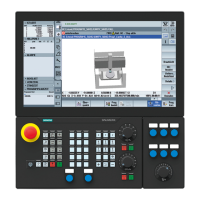
